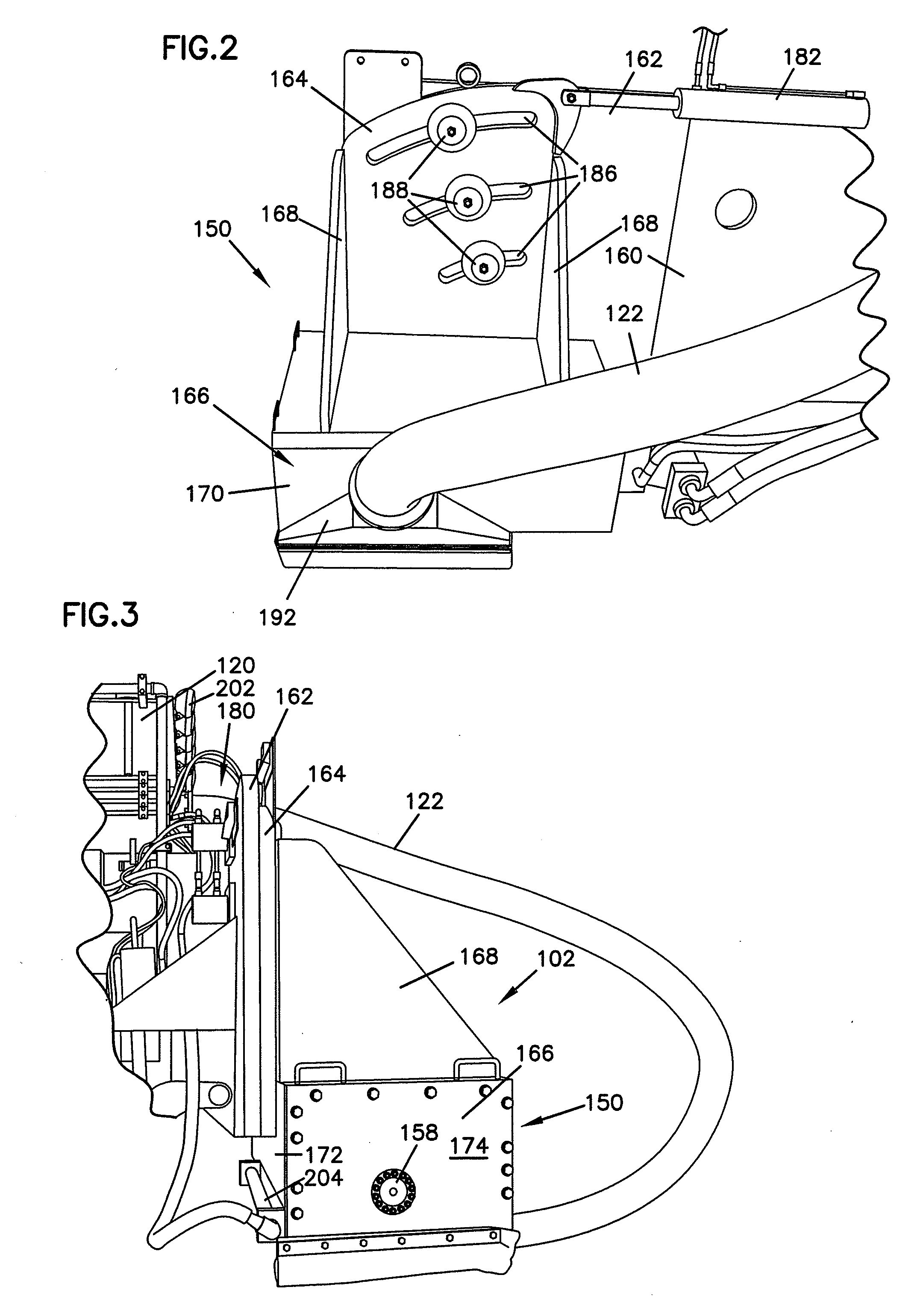Close proximity grinder
a grinder and close proximity technology, applied in the direction of highways, surface mining, road maintenance, etc., can solve the problems of not being suited to performing certain grinding functions, not having sufficient power or mass for pavement grinding, and affecting the operation of grinders, etc., to achieve tight turning radius and improve maneuverability
- Summary
- Abstract
- Description
- Claims
- Application Information
AI Technical Summary
Benefits of technology
Problems solved by technology
Method used
Image
Examples
Embodiment Construction
[0023]Referring now to the drawings and in particular to FIG. 1, there is shown a grinder, generally designated 100. The grinder 100 is configured for close proximity grinding by a laterally extending grinder assembly 102 and for grinding surfaces that are angled relative to the surface upon which the grinder 100 travels. Such grinding is needed for curbs at the edge of a road or street. The grinder 100 generally includes a frame 104 supported on front wheels 106 and rear wheels 108. In one embodiment, the front wheels 106 and rear wheels 108 are both steerable for improved maneuverability to closely follow a curb at the edge of the road. The front wheels 106 and rear wheels 108 may be steered in coordinated opposite directions for a tighter turning radius than is possible with other grinders and conventional two-wheel steering arrangements.
[0024]The grinder also has operational systems that are conventionally used with other types of pavement grinders. The grinder 100 includes an e...
PUM
 Login to View More
Login to View More Abstract
Description
Claims
Application Information
 Login to View More
Login to View More - R&D
- Intellectual Property
- Life Sciences
- Materials
- Tech Scout
- Unparalleled Data Quality
- Higher Quality Content
- 60% Fewer Hallucinations
Browse by: Latest US Patents, China's latest patents, Technical Efficacy Thesaurus, Application Domain, Technology Topic, Popular Technical Reports.
© 2025 PatSnap. All rights reserved.Legal|Privacy policy|Modern Slavery Act Transparency Statement|Sitemap|About US| Contact US: help@patsnap.com



